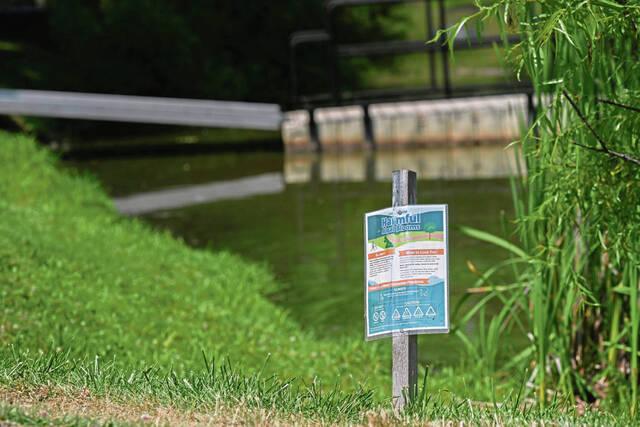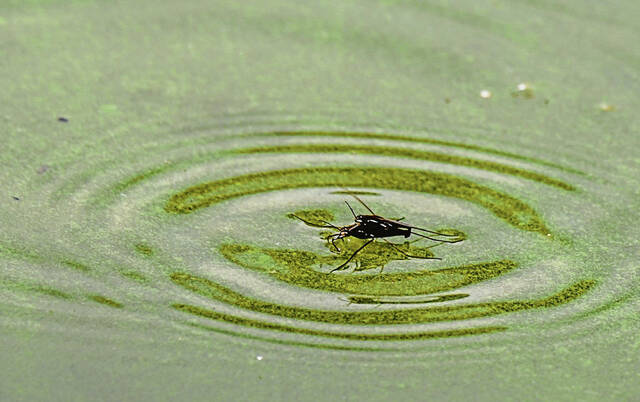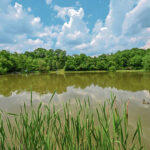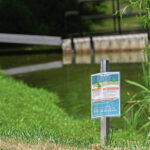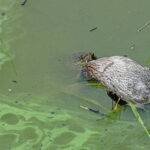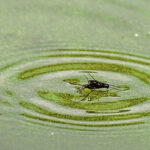Lower Burrell is looking for a way to curb the algae bloom in Burrell Lake Park after state environmental officials warned the bloom is severe enough to be “harmful.”
Lauren Camarda of the Department of Environmental Protection said samplings from the lake taken June 11 indicate concentrations of cyanobacteria are “well above” the threshold at which people should avoid contact.
“DEP’s harmful algal bloom task force has been in contact with the city of Lower Burrell with this information and recommended actions,” Camarda said. “It is DEP’s understanding that the city is posting signage for park users.”
City Manager Greg Primm confirmed the city has posted signage from the DEP notifying people of the algae bloom.
“DEP didn’t even recommend we treat,” he said. “They just recommend we post signs.”
Burrell Lake is primarily used for fishing. Swimming is prohibited.
“They can still fish,” Primm said. “There’s nothing (from the DEP) that said you can’t continue to let people fish.”
Camarda said harmful algae blooms can pose a threat if people or animals make direct skin contact or ingest the algae. Symptoms include vomiting, diarrhea and skin, eye, nose or throat irritation, according to the state Department of Health.
“It is strongly recommended for people and pets to follow safe water recreation practices to limit exposure to the water itself or wash after contact with the water,” Camarda said. “Walking around the lake is permissible, but pet owners should limit their pet’s contact with the water.”
Harmful algae blooms occur when certain organisms multiply and produce toxins in a body of water, according to the Department of Health. Organisms that most commonly cause harmful algal blooms in state waterways are cyanobacteria, or blue-green algae.
Cyanobacteria is a natural part of many aquatic ecosystems, but certain conditions such as high nutrients and warm temperatures can cause it to produce cyanotoxins, the health agency said. Harmful algae blooms can form at any time but are most common in late summer or early fall.
After fielding concerns of the algae over the past couple of months, Michelle Hatbob, the city’s director of parks and public works, attended a webinar last week to learn what the city can do to mitigate the bloom.
The algae emits an odor and has taken over much of the lake’s surface.
The webinar was provided by Solitude Lake Management, a nationwide environmental firm. The city is considering hiring Solitude to treat the lake to remove the algae, or at least reduce it, Primm said.
Primm said he has been in contact with other municipalities who use Solitude for algae treatment and are pleased with its service. The contract could cost roughly $300 to $400 a month, from April to October.
“We’re waiting on a quote from (Solitude),” Primm said.



